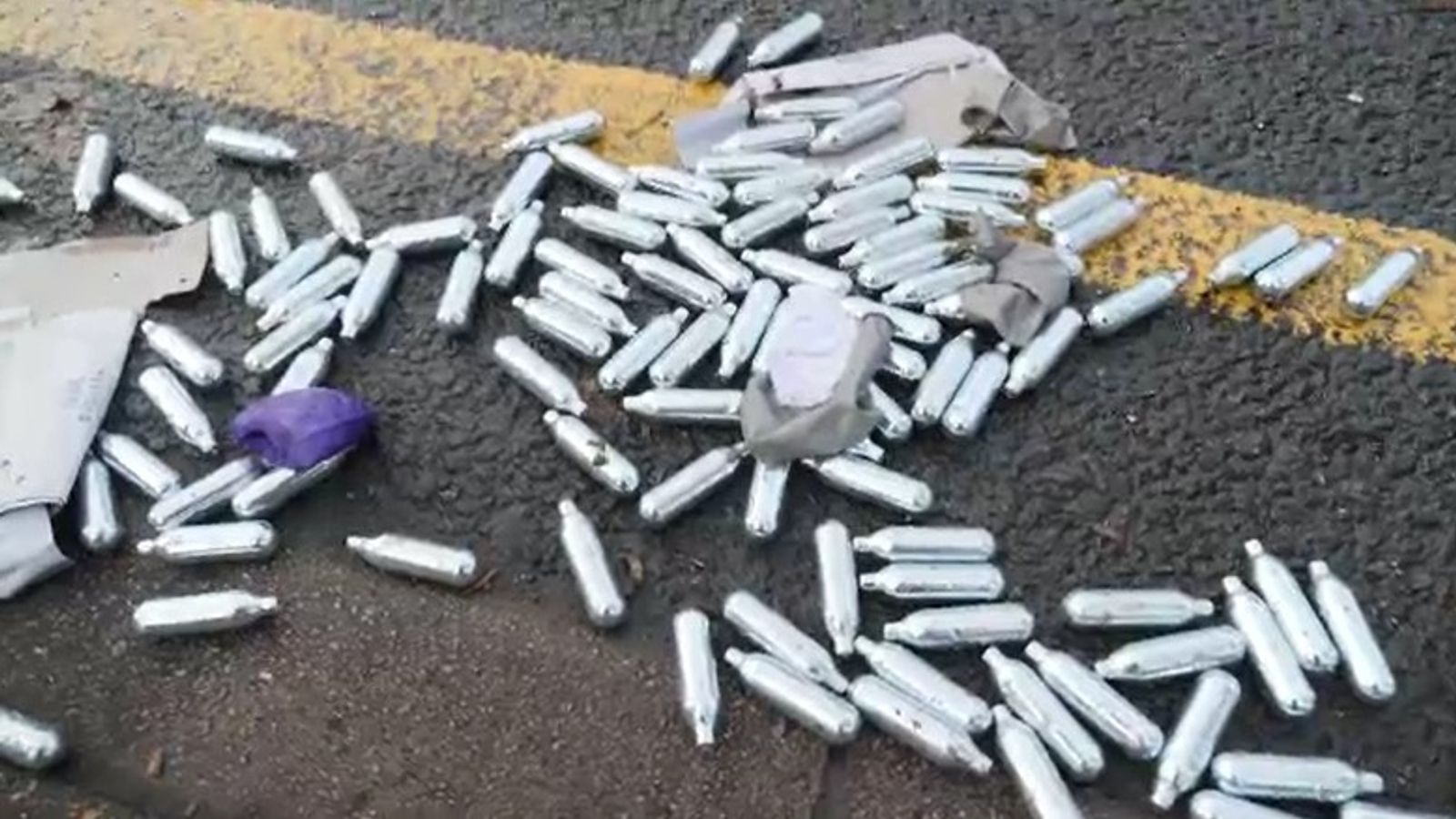Nitrous oxide – also known as laughing gas or nos – is set to be banned as part of a government crackdown on anti-social behaviour.
But how are those silver canisters that litter the pavements used, why do people take it, and what are the health risks?
Here’s what you need to know about nitrous oxide.
What is nitrous oxide and how is it used?
Also known as laughing gas or nos, nitrous oxide is a gas that is inhaled, giving the user a short, sharp high.
The party drug is second to cannabis as the most commonly misused substance among 16 to 24-year-olds in England.
People will often transfer the gas into a balloon, but may inhale it directly from the canister.
Nitrous oxide slows down the brain and body’s responses.
It can create feelings of euphoria and result in giggling fits – hence the nickname laughing gas – but can also cause severe headaches, dizziness and paranoia.
Please use Chrome browser for a more accessible video player
What health problems can it cause?
Prolonged use can cause vitamin B12 deficiency, anaemia and nerve damage.
Doctors have also warned that using laughing gas could lead to spinal injuries.
An investigation by Sky News revealed there had been a spike in hospital admissions caused by people using the party drug.
Read more:
How laughing gas addiction ‘messed up’ man’s life
Misuse of party drug laughing gas ‘is no joke’, neurologist warns
Misuse of the substance is the most common cause for emergency admissions to the neurology ward, Dr David Nicholl, clinical lead for neurology at Sandwell and West Birmingham NHS Trust, told Sky News in December.
He said people came to hospital experiencing difficulty walking, tingling in the hands and feet, slurred speech and sometimes seizures.
What legitimate uses does it have?
Small silver nitrous oxide canisters are often marketed in boxes labelled “cream chargers” – an indication of one of their more innocent uses.
Nitrous oxide is used in whipped cream chargers, particularly in professional kitchens, as a propellant to whip cream.
It can be used to get more oxygen into a car engine – helping it to go faster.
When combined with oxygen it is also used as an anaesthetic in medical and dental settings.
How do people get hold of it?
The undercover investigation also found it was easy to buy nitrous oxide from cornershops.
The shops didn’t ask how old those buying the canisters were or what they intended to do with them.
Every shop added in a packet of party balloons which are commonly used to inhale the gas.
Why is it being banned?
The ban is part of a crackdown on anti-social behaviour.
Announcing the ban on Sky News’ Sophy Ridge on Sunday programme, levelling up secretary Michael Gove said it was “absolutely vital that we deal with this scourge”.
He said: “I think anyone who has the opportunity to walk through our parks in our major cities will have seen these little silver canisters, which are examples of people not only spoiling public spaces but taking a drug which can have a psychological and neurological effect and one that contributes to antisocial behaviour overall.”
Please use Chrome browser for a more accessible video player
Be the first to get Breaking News
Install the Sky News app for free
What does the ban mean?
Supplying nitrous oxide for its psychoactive effects is already illegal, but the ban means possession could result in prosecution.
The ban will be issued under the Misuse of Drugs Act 1971 but it has not yet been confirmed which class – A, B or C – the drug will fall under.







